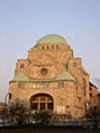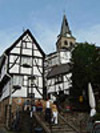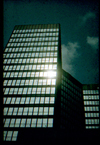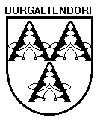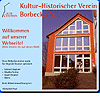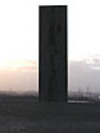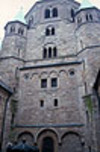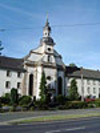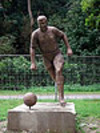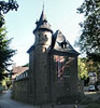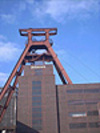The Horster Mill
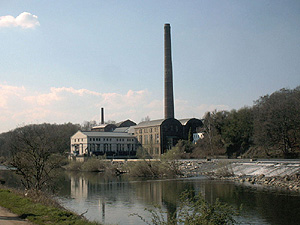
The Horster Mill is a hydropower station at theRuhr in theEssen district Horst.
The location has a very old history. Circa 300m stream-up was a mill situated that was first mentioned in 1319. It belonged to the governors of Horst. These owned estates from the Maasto theSauerland.
King Frederick II made the Ruhr navigable from 1774to 1780 and so a weir and a lock chamber were built here made of brickwork with cover plates made from natural stone. The new mill is situated in the present west factory terrain. It is operated as oil, fruit and blue mill. The blue (Th�nards blue) was broken from cobalt, which stemmed from the Hesper valley at the Baldeney Lake. It was used among others for the blue dyeing of slave smocks fromCarolina.Picture Copyright : http://de.wikipedia.org/wiki/Bild:Horster_Muehle_Essen.jpg
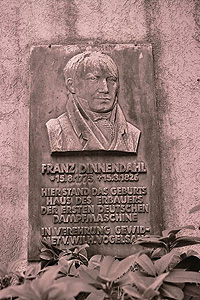
The mechanical engineer Franz Dinnendahl (1775-1826) and his brother Johann were born as sons of the miller at the Horster Mill. Today a memorial plaque remembers the mining industrial pioneer.
The mill was taken over in 1840 by the Essener industrialist Friedrich Ludwig Niemann, who built a residential villa nearby.
In the year 1910 the mill, the H�rster Fieldand environ, house Horst and the residence, today the Villa Vogelsangwas purchased at an auction from the Dammer bankruptcy by the entrepreneur by Wilhelm Vogelsang (1877-1939). He constructed several factory buildings in clinker architecture. The still preserved chimney of the Carbide Factory contains bright stone bars and the lettering W. Vogelsang.
Vogelsang founded also the new pit Wohlverwahrt (closed 1962) further up of the facility. Of the former pit onlyone building from the year 1915 remains today. Vogelsang didn't join the Carbid syndicate, a European cartel and had to close down the factory in 1932. But the powerplant was operated until its closure in 1971 (after a transmission wheel broke).
The builder Franz Rudolph bought theplant in 1985 for the symbolic price of 1 DM and invested roughly17 million DM into the listed building. The powerplant deliverspower again since 1989 into the network of theRWE. Circa 2.500 householdsare provided with environmentally friendly power.
During the dry seasons in summer the opposite situated back pumping station is used to pump back up to 2.200 l water per second into 4,03m height to preserve the water level for drinking water production.
Picture Copyright : http://de.wikipedia.org/wiki/Bild:Franz_Dinnendahl02.jpgThis article is based on the article from http://de.wikipedia.org/wiki/Wasserkraftwerk_Horster_M%C3%BChle the free Encyclopedia Wikipedia and is under http://de.wikipedia.org/wiki/GNU-Lizenz_f%C3%BCr_freie_Dokumentation . In Wikipedia is ahttp://de.wikipedia.org/w/index.php?title=Wasserkraftwerk_Horster_M%C3%BChle&action=history available.

 Deutsch
Deutsch Nederlands
Nederlands Dansk
Dansk Österreichisch
Österreichisch Po Polsku
Po Polsku Italiano
Italiano Francaise
Francaise Portugiesisch
Portugiesisch




